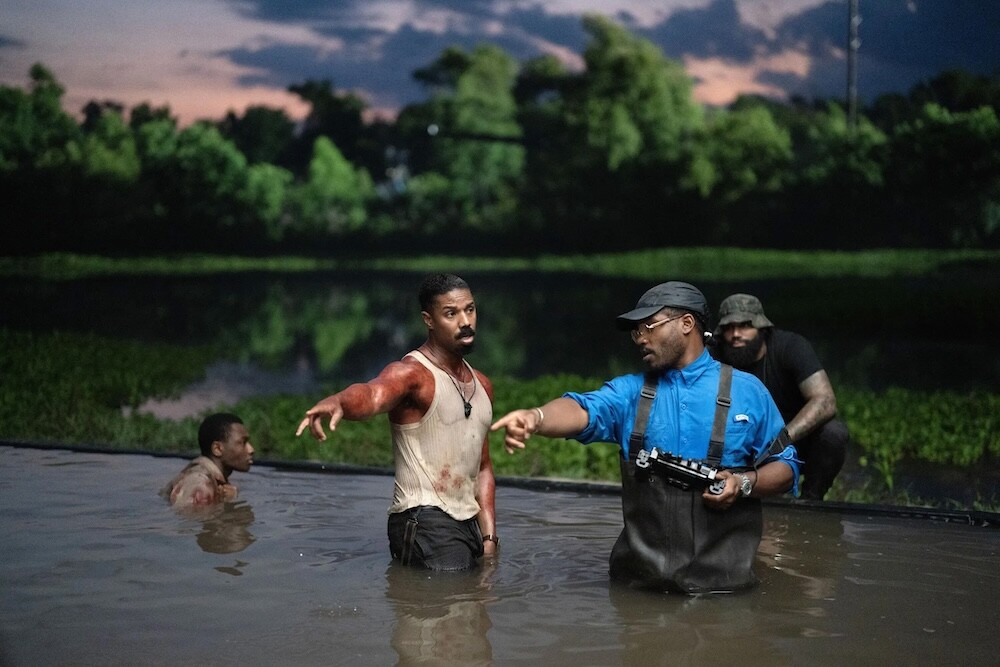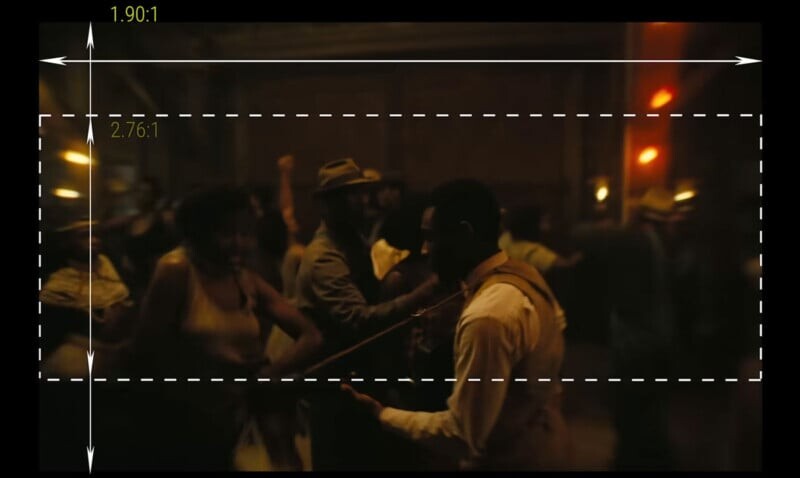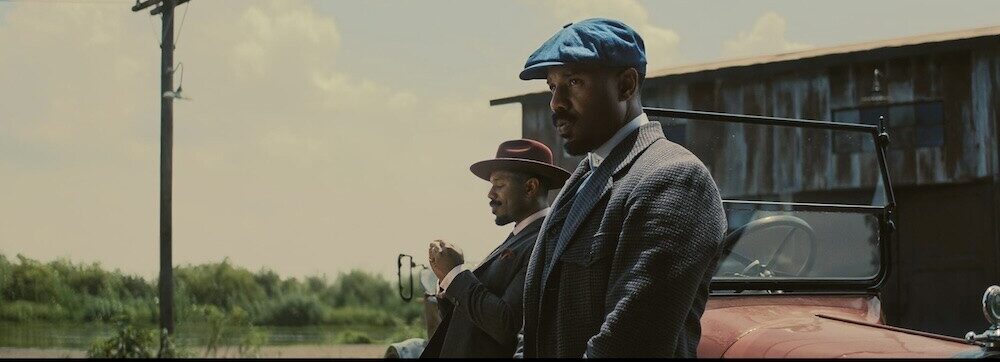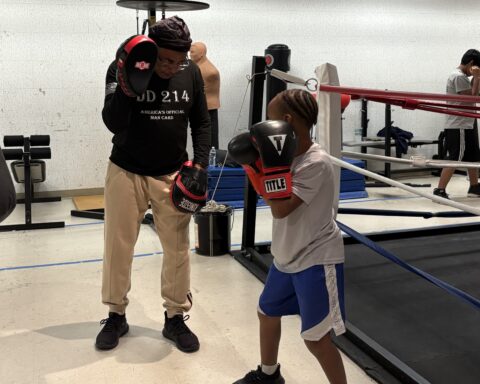Forget movie of the year — “Sinners” is a cultural event, a cinematic reckoning that redefines what Black horror and Southern storytelling can look like. Vampires, hoodoo, southern blackness, religion, blues and blood infiltrated our minds when the film opened in April. If you’re like me, some notable scenes constantly replay in your head.
If you haven’t experienced this masterpiece in person, it’s back in theaters until Thursday. That’s a perfect way to wrap up Spooky Season. After reading my deep dive into this film, you may be even more inclined to visit the theaters. So, spoiler alert!
I am a third-year MFA film candidate at Howard University, hailing from the small rural town of Statesboro, Georgia. Growing up, media and entertainment were my escape. Books, music, dance, theater and film were all ways for me to travel to another world without physically leaving this one.
Of all the film genres, horror, history and Black film instantly became my favorites. I was first introduced to the artistic subgenre of Southern Gothic at the age of 5 when I watched “The Color Purple” on VHS with my mama. Since then, this film and subgenre have remained in my time capsule, serving as inspiration for my current and future films.
Southern Gothic is a film subgenre that blends Gothic elements with settings in the American South. It often features flawed characters, decaying settings and sinister events. Some of my favorite films and TV shows that are Southern Gothic include “Eve’s Bayou,” “Beloved,” “Daughters of the Dust” and “Lovecraft Country.” Now we have a new body of work to add to the collection, and that is, of course, “Sinners.”

Ryan Coogler wrote, directed and produced this new and exciting take on a vampire story like we’ve never seen before. He combined the harsh reality of the racist South with elements of religion, music, lust and, yes, sinning. All these things may seem like they don’t mesh well, but they very much coexist.
Every detail in this film feels intentional — from the strumming of guitar strings and banjos woven into the score to the deliberate use of colors like red and blue to define its characters. Nothing is accidental; each choice serves a purpose. The fact that Coogler developed this story about a place where these events would seem to never take place gives a voice to those who feel unseen and unheard. This is what Southern Gothic film is about. This is what Black filmmaking is about. This is why his craft speaks volumes and will for generations to come.
As a director, producer and writer, my goal as a filmmaker is to have the artistic control you want in a project. Coogler worked out deals with companies like Warner Bros. that give him full ownership after 25 years.
What does that mean?
Usually, when writers sell a script, the production company reserves the right of full creative control unless they work out something together. We all have films that we’ve seen grow over the years, and those same production companies still own the rights to them. Therefore, they’re still profiting off them. This deal that Coogler secured is unheard of in Hollywood, especially for a Black filmmaker. With it, he will forever profit from his work.
“Sinners” is also the first movie to be simultaneously shot on Ultra Panavision 70 (2.76:1 aspect ratio, which measures width to height) and IMAX (1.90:1 and 1.43:1). In our day and time, films are shot digitally now with the use of 4K and 6K cameras. The larger the imaging surface, the higher the resolution and the shallower the depth of field in the digital world. Before digital, films were created in analog movie formats, such as Super 8 (1.36 aspect ratio) and Super 16 (1.66 aspect ratio), which refers to the frame size we see on the big screen.

Coogler wanted to capture this format on film, because it was the format he fell in love with in school. He and his team wanted to deliver a more raw and dynamic range, which helped to contribute to the film’s horror vibes. If you get the chance to see “Sinners” in theaters, they recommend IMAX (1.43:1 aspect ratio). It’s how he and his team shot the film, how they intended it to be seen and it is the most immersive experience.
Not only is Coogler great at securing good deals, but he also never lets us down with his choice of casts in the films he directs. The saying “If it ain’t broke, don’t fix it,” perfectly captures Coogler’s collaboration with Michael B. Jordan. Coogler keeps bringing Jordan back for a reason. When you build that kind of trust with your director, it shows on screen. They speak the same creative language, and that chemistry translates into every project they touch.
In “Sinners,” it translates to the screen when MBJ embodies twin characters Smoke and Stack, by physically and emotionally transforming himself into individual entities. It also translates visually and cinematically from the works of Autumn Durald Arkapaw, who did the cinematography, as well as from the production design and costume design. Arkapaw also worked on Coogler’s earlier films, which shows how intentional he is with using people he trusts to complete his vision.

“Sinners” takes us on a ride down memory lane, back to the 1930s in the rural town of Clarksdale, Mississippi. In the words of Andre 3000, “The South got sum to say,” and the South has been speaking musically and cinematically for years. Coogler grew up in Oakland, California, and although that’s not the South, his maternal grandfather and uncle had roots in Mississippi. His personal and ancestral roots in the South inspired the story and characters in the feature.
As a Sweet Southern Belle myself, I want my films to tell stories about the Black experience in ways audiences have never seen — that’s what “Sinners” is for me. The film left me flooded with emotion — excitement, grief, love and a deep sense of belonging — that inspired me to keep writing my thesis, “Grandma’s Hands.”
Like “Sinners,” “Grandma’s Hands” will be a Southern Gothic film shot in the South, in my hometown, Statesboro, Georgia. It’s a story of legacy, loss and the bond between a Black matriarch and her granddaughter. This story is personal to me, because it’s loosely based on my life as a little girl and the relationship I shared with my late grandmother.
When I see Black filmmakers living out their dreams, it lets me know that I am on the right path and that I made the right decision attending Howard University for film school. Our film program is not only the sole MFA program at an HBCU, but it is also the birthplace of modern Black filmmaking. Many films you’ve seen today by a Black filmmaker have followed the teachings of the Howard University Film & TV Program without you even realizing it.
Before I started this program, my obsession with film was deep, but now my love for film has evolved into more knowledge and passion about all the hard work that goes into a 90 to 120-minute film on your screen. As a film student who sometimes struggles to see the end goal of hard work, “Sinners” is a reminder that in due time, your story will be told. It’s a reminder that genre films can carry deep cultural and historical meaning, and you don’t have to reduce risk or water down identity to appeal widely.
So, will I see you in theaters?
Chat McDuffie is a third-year MFA Film candidate here at Howard University from Statesboro, Georgia. She wrote this film analysis for HUNewsService.com.













